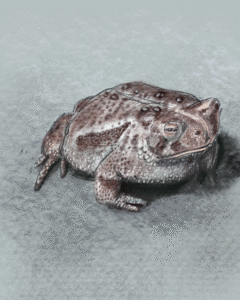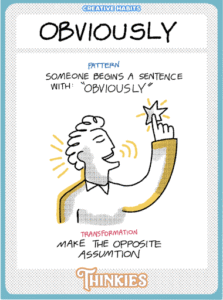A Neuroscience-Informed Field Guide for Self-Organization (Part 2 of n)

This is the second post in a series titled “A Neuroscience-Informed Field Guide for Self-Organization.”
ICYMI, in the first post, Beyond the Lizard Brain: Nurturing Adaptive Teams, I suggest we retire an outdated myth and instead utilize the Adaptive Brain Model, embracing what modern neuroscience reveals:
- Emotions are constructed, not hardwired
- Our brains have plasticity, not rigid structures
- Our brain’s core function is adaptation to internal and external environments, constantly minimizing prediction errors
In that post, I also:
- Highlighted my core belief that organizations are living ecosystems to be nurtured, not machines to be controlled
- Introduced an adaptation of Ken Wilber’s Four Quadrants to view multiple dimensions of experience and challenge: Personal, Relational, Practices, Environmental
- And finally shared five adaptive practices for continual improvement: Scan, Predict, Experiment, Reflect, and Share.
For this post, I’ve chosen to zoom in on the Personal (I) quadrant. It feels like the best place to start, because a team is, at its core, a collection of individuals, and the collective’s dynamics and effectiveness are profoundly influenced by its members’ behavior. (Environment and practices, of course, matter as well. We’ll get to them down the road.)
The Personal (I) Quadrant: Your Inner Landscape
The Personal (I) quadrant focuses on an individual’s inner world, encompassing mindset, emotions, behaviors, and skills. Exploring this landscape emphasizes recognizing one’s neural patterns, cognitive biases, and increasing self-awareness and emotional regulation to build adaptive responses.
Tensions that emerge in the personal quadrant include:
- Belonging/Identity: In/out, smart/stupid, competent/incompetent
- Safety/Trust: Right/wrong, safe/threatened, supported/exposed
- Fairness/Control: Fair/unfair, heard/ignored, valued/dismissed
Adaptive Brain Insights
For a long time, popular understanding suggested that our brains were “hardwired” with primitive responses that took over under stress, an idea often linked to the outdated “triune brain” theory. This implied emotions were automatic, unchangeable reactions. However, modern neuroscience has thoroughly debunked the model as inaccurate.
Instead, Dr. Lisa Feldman Barrett’s research reveals that emotions are not simply triggered automatic reactions; they are actively constructed by our brains based on continuous prediction, context, and learned patterns. (If you haven’t read it, I highly recommend her book “Seven and a Half Lessons About the Brain.”)
What feels like an automatic stress response is actually your brain making its best guess about what’s happening now, and likely next, based on past experience. This insight means that individuals can learn to construct different emotional responses to pressure by changing their predictive patterns through practice. The brain is remarkably plastic, capable of rewiring throughout our lives.
For example, when a teammate challenges one of your ideas, your brain might predict ‘threat’ based on past criticism. But you can practice constructing ‘curiosity’ instead – what insight are they offering?
Practices and Tools
Understanding the theory is one thing – but how do we actually rewire these patterns? Modern neuroscience underscores that the answer lies in small, consistent practices that create lasting change by activating our brains’ natural capacities for adaptive architecture. So, how do we begin this journey? Let’s start with the basics.
Self-Observation and Reflection
- Why: Regularly reflecting on our inner experiences helps us develop emotional granularity, understand our stress signatures, and explore our reactions with conscious awareness. This supports building adaptive response repertoires.
- Scan, Predict, Experiment, Reflect: Daily – Dedicate a short period each day to journaling. One 20-minute pomodoro. Just capture. Don’t edit. Brain dump. Stream of consciousness. Weekly – look for what’s emerging. Journal reflections might include: “What were my initial predictions about certain interactions or tasks?” “Where did my predictions go off track?” “What emotions did I experience, and how did I construct them?” Plenty of nice apps if you’re a fan of digital journaling: Rosebud.app, 750Words.com. Pen and paper also work.
- Share: You will start to recognize some patterns. You may even be able to articulate when and where you’re likely to succumb to things that aren’t serving you well. Be brave and share with a trusted colleague, team member, or coach. Maybe even launch a new experiment: “Hey, I’ve noticed x, I’m gonna try y, can you support/observe, etc.”
Depending on what you find, some follow-up practices, deeper dives into specific patterns, may be useful.
Personal Prediction Errors & Cognitive Biases
Our brains are “prediction engines.” It’s how we navigate the world, minimizing energy consumption by that 3-pound thing in our skulls. Prediction errors often stem from cognitive biases, which are systematic deviations from rationality in judgment. These patterns can hinder effective decision-making and collaboration.
Fortunately, we don’t have to live with this: our brains are remarkably plastic. (And hopefully our teammates will be generous in their forgiveness!)
- Why: By bringing conscious awareness to non-conscious processes, we can begin to construct more adaptive responses and update our mental models.
- Scan, Predict, Experiment, Reflect: In your daily journal, actively track moments when your initial prediction about a situation was wrong. Upon your weekly reflection, identify any specific biases involved (e.g., confirmation bias, anchoring. Here’s a nice neat codex of all ~188 Cognitive Biases).
- Share: Discuss observed patterns and insights with a colleague or teammate. Maybe co-create some bias-interruption or misattribution error correction techniques.
Gremlins and Gargoyles: Transforming Inner Critics
Sometimes our prediction errors reveal deeper patterns lurking beneath the surface. For instance, you might notice you consistently suffer from confirmation bias during a post-mortem, or a retrospective – only hearing/seing that which confirms your initial assessment while dismissing contradictory info. But when you dig deeper, you discover the real pattern: an inner voice whispering, “If I’m wrong about this, people will think I’m incompetent.” That’s what I call a “gremlin.”
Gremlins are the persistent critics that roam our psyche, constantly responding to tensions (Belonging, identity, safety, trust, fairness, and control). Left unchecked, they sabotage personal growth (and collective performance.)
From an adaptive brain perspective, gremlins are your brain’s prediction system gone awry. When that inner voice whispers ‘people will think X’ your brain is making a prediction based on past experiences of criticism or rejection. It’s constructing an emotional response of threat or shame before anything has actually happened. These protective patterns made sense at some point – perhaps they helped you avoid real social rejection in school or early career experiences. But now they’re misattributing current situations to past threats, creating prediction errors that limit your effectiveness.
The good news? Because these patterns are constructed predictions rather than hardwired responses, they can be transformed into ‘gargoyles’ – protective guardians that offer wisdom rather than fear. Through neuroplasticity, you can teach your brain to construct different emotional responses, honoring the protective wisdom while updating the prediction patterns that no longer serve you.
- Why: Transforming your inner critics from saboteurs into allies reduces emotional reactivity, improves decision-making, and creates space for genuine psychological safety in team settings.
- Scan, Predict, Experiment, Reflect: Notice when defensive thoughts arise during interactions and track these in your journal. Over time, recognize your gremlins’ patterns – when do they show up and what triggers ‘em? You can then start to predict the troublemaker’s arrival (“I notice I become defensive when…”), then experiment with translating the mischief (Slow down, take three deep breaths, inquire: “What am I really concerned about?”, “What does this protective voice know?”). Reflect on how reframing changes your response.
- Share: Practice sharing your gremlins with trusted colleagues. “Hey, I notice my ‘imposter syndrome’ gremlin is primed for action today – if I seem defensive during the design review, that’s probably why. Help me out by asking, ‘Who invited Syd?’”
Advanced Practices: The individual gremlin to guardian work connects to broader team dynamics, which we’ll explore in later quadrants. However, if you can’t wait, have a look at the following articles and consider things from the “Personal (I)” quadrant:
- Organizational Silence: You might explore your role in self-censorship when your “I don’t want to look stupid” gremlin prevents you from sharing important concerns or ideas with the team.
- Fear & Vulnerability: Consider journaling about your personal fears and vulnerabilities that surface during team interactions, identifying which gremlins emerge when facing difficult conversations.
- Safety Check: Use your journal to track when you feel psychologically unsafe and which protective patterns activate, building awareness for future team safety discussions.
Going With the Flow: Personal Improv Exercises
After all that seriousness, considering how to deal with inner critics and cognitive biases, let’s shift gears towards a bit of fun and creativity? Applied Improv offers a wonderful way to break out of habits.
- Why: Think of improv as cross-training for your adaptive brain – practicing spontaneous responses to whatever comes your way. Improv stretches your mind and encourages flexible, creative thinking while fostering adaptability and collaboration.
- Scan, Predict, Experiment, Reflect: Journal and notice how you and team members behave in collaborative situations – when energy flows and when it stops. Predict an upcoming interaction where you can try something new. Engage in some personal improv – employ a “yes, and” or a “funny you should mention that” approach, to build on colleagues’ ideas rather than, say, immediately pointing out problems via “yes but…” Reflect on increases in your ability to think on the spot and your willingness to explore different perspectives.
- Share: Share your observations with teammates. See if you can enlist others to join in the fun
Advanced Ideas: You can also connect your improv practice to team dynamics by purposefully taking on a missing or non-default communication role. If you’re typically a Mover, try on Follower, Opposer, or Bystander for a change. (See Kantor’s Four Player Model for more details) We’ll dive deeper when we explore the Relational quadrant.
Thinkies: For When You Get Stuck
If, in the course of any of the above exploration, you find you’re having difficulty disrupting habitual thinking, you’re not alone. Not by any stretch. Let me briefly introduce you to Kent Beck’s “Thinkies” as well as Brian Eno’s “Oblique Strategies”
Both “Thinkies” and “Oblique Strategies” serve as cognitive pattern breakers designed to spark creativity, reveal new solution pathways, and activate neuroplasticity. In short, get you out of a rut.

Here’s one example Thinkie, applied to the Personal Quadrant, challenging individual cognitive biases , assumptions, and prediction errors
- OBVIOUSLY
- Pattern: Someone (could be the voice in your head) begins a sentence with “Obviously”
- Transformation: Make the opposite assumption
For example, “Obviously Andy didn’t read my email…or he wouldn’t be asking that right now…” becomes “Andy did read my email… why is he asking that? Maybe my email wasn’t crystal clear…”
There is a lot more to explore. I’ll see if I can bring in more Thinkies and/or Oblique Strategies as we make our way through the other three quadrants, investigating how teams can actively shape their collective capacity for resilience and adaptation by overcoming habitual thinking.
Cultural/Remote Considerations
As I mentioned in the first post in this series: “context matters.” Cultural backgrounds shape how we express emotions, handle conflict, and view introspection itself. What feels like “authentic sharing” in one culture might feel inappropriately vulnerable in another.
Similarly, remote and hybrid work environments create unique challenges. You might notice different emotional patterns during video calls versus in-person interactions, or find that your gremlins activate differently when working from home versus the office.
Track these contextual influences in your journaling practice – note when cultural expectations or work environment shifts affect your inner landscape. Look for patterns in your weekly reflections.
The key will be to adapt the above experiments to your context rather than accepting them as presented. All are intended as invitations, not prescriptions to follow.
We’ll explore how cultural differences and work arrangements affect team dynamics more deeply when we move to the Relational quadrant.
The Ripple Effect
By understanding your inner landscape and implementing consistent practices that reshape your mental patterns and emotional responses, you build a stronger foundation for yourself and your team. Small, deliberate actions accumulate into significant neural and behavioral changes. Personal transformation ripples outward.
Next, we’ll expand our perspective to the Relational (We) quadrant, exploring how understanding our adaptive brains translates into healthier communication patterns and collective psychological safety – nurturing the soil where teams can truly flourish.
